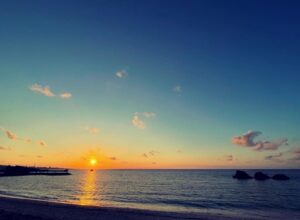【Student Life 2023】Hot salty water beneath volcanos: six months as a JSPS fellow in the University of Tokyo
【Student Life 2023】
Olivia R Hogg(JSPS Postdoctoral Fellowships for Research in Japan (Short-term Program))
1. Why I applied for a JSPS Fellowship
My PhD focuses on modelling the composition of magmatic hydrothermal fluids that are responsible for ore-formation. The challenge for conventional mining practices is that this process of ore formation takes tens of thousands of years. Supercritical geothermal power plants are unique locations where super-heated magmatically-derived fluids are extracted for the purpose of providing a more efficient renewable energy source. What if we could harness an array of economically important metals like Cu from these fluids and co-produce geothermal energy? The utility of these fluids as multipurpose resources is actively being explored for extraction of metals like silica and lithium.
Geothermal energy is a promising renewable energy source in Japan and an ideal location to investigate this research, therefore I applied to a JSPS fellowship. There are a few fellowship to choose from that vary in length and fellow-type. I was awarded a predoctoral short-term fellowship which funded my research for 6 months in Japan. This research focused specifically on understanding the origins of metal enrichment in high temperature fluids from a supercritical geothermal power plant in Japan (Kakkonda) and how they compare to fluids exsolving from local magmatic systems (Iwate). As such we devised a detailed geochemical study that focused on analysis of whole rock and olivine hosted melt inclusions.
2. JSPS research and funded opportunities
The JSPS funding enabled me to plan a field study to Mount Iwate with myself and members of my host research group (Figure 1). Samples from the most recent eruptions at Mount Iwate have not yet been analysed geochemically, hence our research will provide novel data for this eruption. After fieldwork was complete, samples were prepared for a melt inclusion study. This required whole rocks to be crushed and sieved into different size fractions. Olivine phenocrysts were individually picked, mounted, and polished before being set in epoxy discs and finely polished, ready for SEM imaging and EPMA analysis.
Outside of research I had to the opportunity to attend the Water-Rock Interaction Conference in Sendai where I chaired my first conference and presented some new research that I had been developing during my time in Japan (Figure 2). I was also able to meet people that are involved in the geothermal industry here in Japan and as a result myself and host supervisor were able to organise a tour around the Kakkonda Geothermal Power Plant. This was a real highlight of my time in Japan as I was given the unique opportunity to witness the real life application of my research.
3. Life in Japan
Having never travelled to Japan before, I arrived during the infamous Sakura season where streets and parks are filled with cherry blossom trees and shops are bursting with Sakura themed food, drinks and omiyage (Figure 3). One of the most invaluable opportunities provided by the University of Tokyo was the free Japanese language courses which really helped me navigate daily life a little easier! Tokyo is not short of local festivals and historic temples and shrines which were a great way to experience the rich traditions of Japanese culture. I had heard about how the city transforms from day to night but seeing the vast array of neon lights in all the bustling pockets of Tokyo was an experience like no other (Figure 4). But if you feel you need to escape the hustle of busy Tokyo life, you are just a short train or flight away from the mountains and volcanoes (Figure 5). I truly enjoyed my time here at Todai and in Tokyo and cannot wait to return.





Olivia R Hogg (JSPS Postdoctoral Fellowships for Research in Japan (Short-term Program))
[2023.11Release/2023「Student life」]














